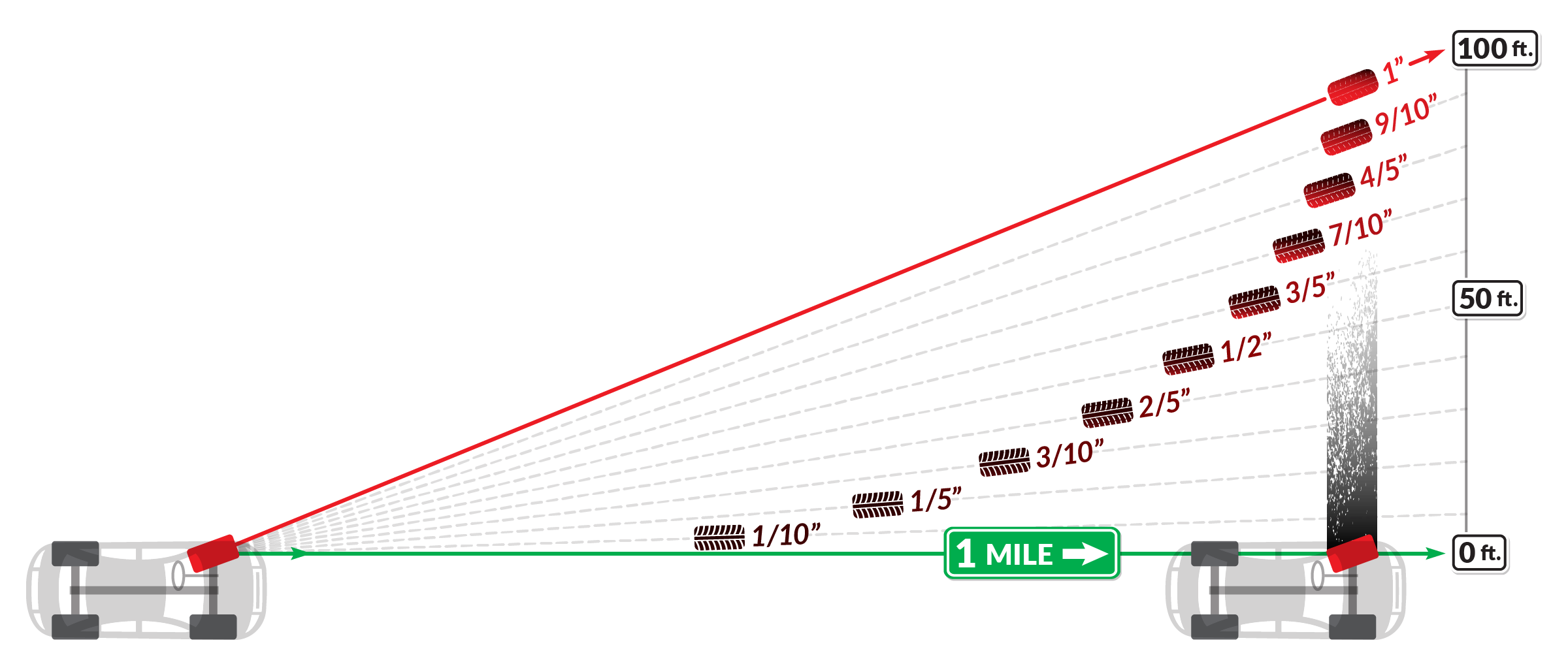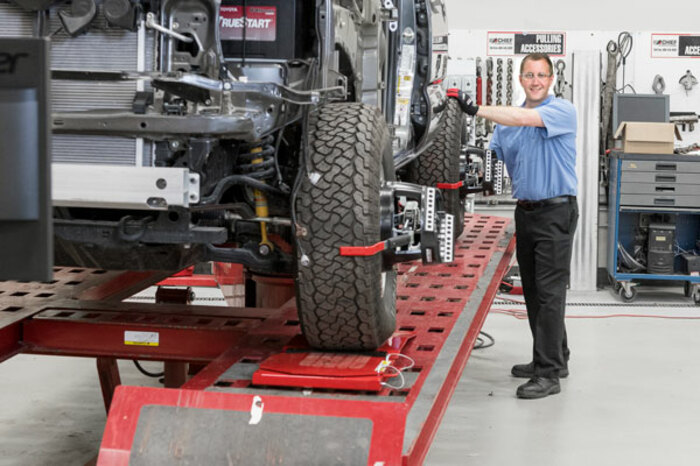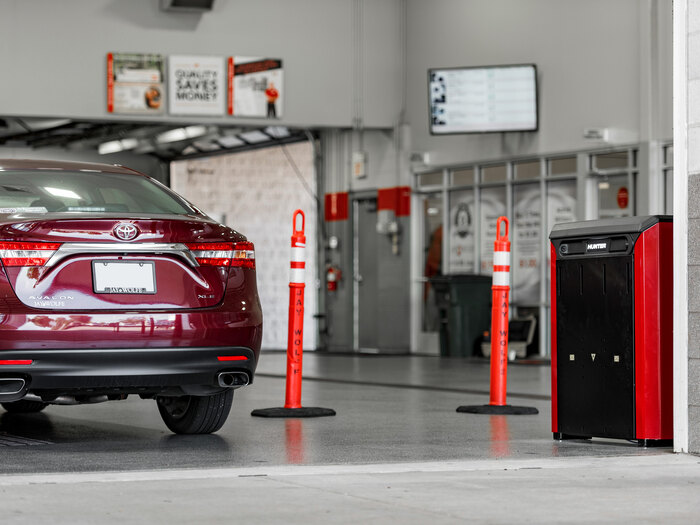Tap into Hunter's extensive network of support available to provide account assistance, product information and technical support.
Benefits of wheel alignment
Ignoring signs of misaligned wheels can make your problems more expensive to address down the road.
Does your vehicle need a wheel alignment?
If you are experiencing irregular tire wear, handling problems or a crooked steering wheel, an alignment check should be performed. Ignoring signs of misaligned wheels can reduce the life of your tires, and can even cause driver assist systems to malfunction. Even without experiencing these problems, most vehicle manufacturers recommend checking your alignment every 10,000 miles or 12 months; whichever comes first. The latest alignment inspection technology allows alignment to be checked every visit.
Educational Videos
Why do Cars Need Wheel Alignment?
When your car is out of alignment, you may experience irregular tire wear, handling problems or a crooked steering wheel. A wheel alignment adjustment can correct these problems and increase fuel economy, prolong tire life and ensure driver assist systems continuing functioning as intended.
Safety System Alignment
Driver assist systems are an important new development in vehicle safety that help drivers avoid collisions and create safer roadways. For driver assist systems to remain fully functional it is important to maintain proper safety system and mechanical wheel alignment
What is Caster Measurement?
The primary functions of caster are to improve directional stability and returnability. Learn more.
What is Camber Measurement?
Proper camber settings will improve road isolation and directional stability. Learn more.
What is Toe Measurement?
Learn about the most critical alignment angle - Total Toe.
Protect your investment
Every inch a vehicle is out of alignment is equivalent to dragging the tire sideways at 100 feet per mile!
This creates dangerous driving conditions and places unnecessary wear on tires.
Statistics obtained from Tire Business

Did you know?
Proper wheel alignment also maximizes fuel economy.
- Vehicles with wheel alignment conditions can suffer a decrease in fuel efficiency by up to 7%.
- A vehicle owner who drives 15,000 miles per year and gets an average of 25 miles per gallon at $3.50 per gallon, proper wheel alignment adds up to $150 annual fuel cost savings.
Statistics obtained from the U.S. Environmental Protection Agency
Reset all alignment-related sensors
As vehicle manufacturers build more vehicles with on-board driver-assist systems, such as electronic stability control, parking assist, traction control and more, an increasing number of manufacturers now require a steering system reset during alignment service. It is important to have your vehicle alignment performed by a shop that is equipped with an alignment system that can reset all alignment-related sensors during alignment service.
Stop safely in wet conditions
The amount of tread on your tire has a direct impact on the stopping distance of your vehicle.

Learn More

Collision Alignment
Keep your collision repair profits by providing alignment services in-house, saving time for you and your customers.

Unmanned Inspection
Automatic, hassle-free resultsCheck the most important alignment angles and edge-to-edge tire tread on every car that visits your shop, no stopping or labor required.










